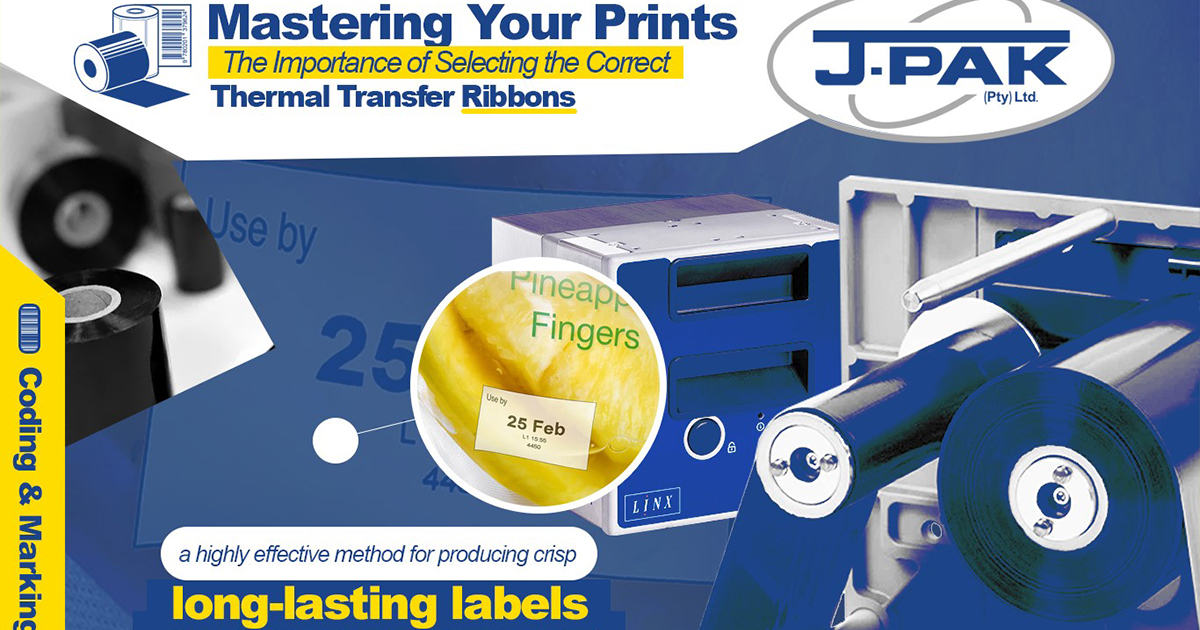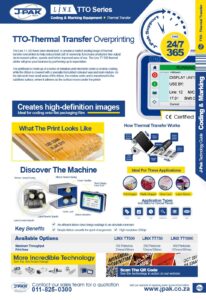
Mastering Your Prints – The Importance of Selecting the Correct Thermal Transfer Ribbons
Thermal transfer printing, a highly effective method for producing crisp, long-lasting labels, relies heavily on the selection of appropriate thermal transfer ribbons. As pivotal components in this process, these ribbons directly influence the durability, legibility, and overall quality of the print.
Thermal transfer ribbons, essentially rolls of ink-coated film, work in concert with a thermal transfer printer and specific label materials to produce high-resolution prints. This print method employs heat from a print head to melt the ink onto the label material. The melted ink then hardens upon cooling, producing a durable image resistant to smearing, fading, and environmental conditions.
However, not all thermal transfer ribbons are created equal. In order to ensure the best possible print, it’s crucial to match the ribbon type with the appropriate label material and application. Ribbons typically fall into three categories: wax, resin, and wax-resin combinations. J-Pak supplies these ribbons at great prices.
Wax ribbons, the most cost-effective option, are ideal for general-purpose printing on paper labels. They offer a high print speed and excellent blackness, which translates into clear and sharp print quality. However, they lack durability and are not suitable for applications requiring resistance to scratches, chemicals, or outdoor exposure.
Resin ribbons, on the other hand, provide exceptional durability. These are best used on synthetic label materials where high resistance to chemicals, extreme temperatures, scratches, and other environmental stressors is required. Labels printed with resin ribbons are typically used in the pharmaceutical, automotive, and electronics industries, to name a few.
The third category, wax-resin ribbons, offers a balanced blend of the characteristics of both wax and resin. They provide better durability than wax ribbons but at a lower cost than pure resin ribbons. This makes them perfect for semi-gloss paper and some synthetic materials.
Choosing the correct thermal transfer ribbon is not just a matter of matching the material. It’s also necessary to consider the specific application, the expected lifespan of the label, and the conditions it will be exposed to. Factors such as temperature extremes, sunlight, moisture, friction, and chemical exposure can all impact the choice of ribbon.

The correct thermal transfer ribbon selection can save a significant amount of time and money in the long run. The optimal ribbon can reduce the need for reprinting due to poor quality, prevent premature wear on your print head, and even avoid potential damage to your thermal printer.
Furthermore, it’s worth mentioning that each printer model may have its specific requirements and compatibility issues, so always refer to the printer manual or consult with J-Pak before making a ribbon selection.
In conclusion, the right choice of thermal transfer ribbon can significantly enhance the print quality, durability, and longevity of your labels. By understanding the properties of wax, resin, and wax-resin ribbons, and aligning them with the label material and application requirements, you can optimize your thermal transfer printing process to yield the best results.

